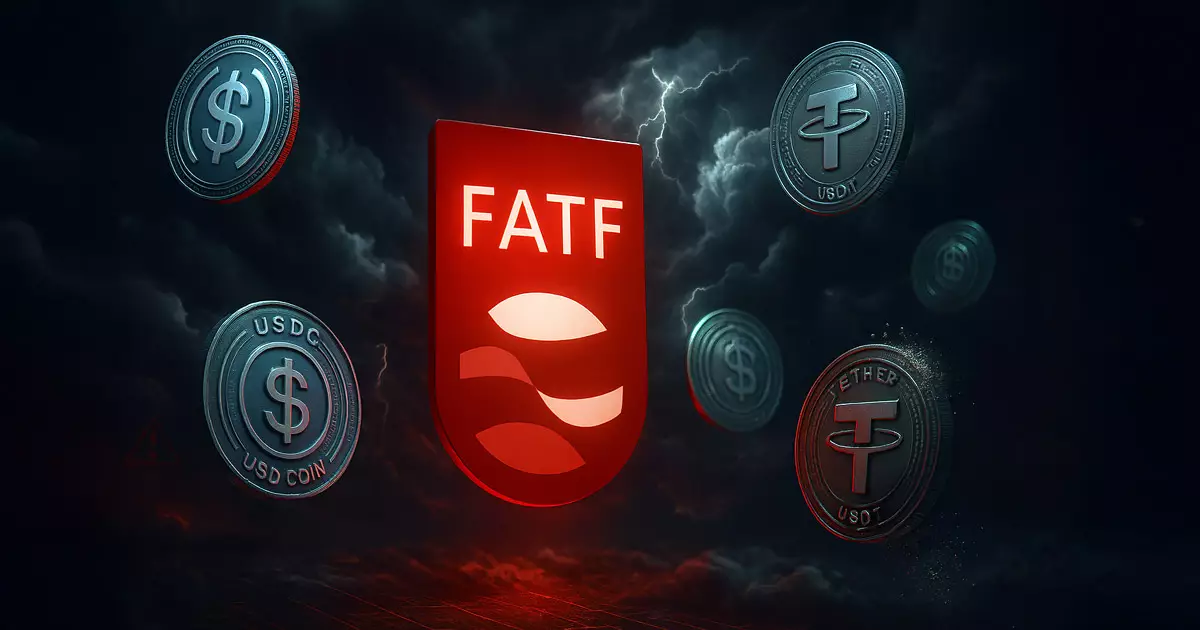Despite years of warnings and efforts, the world remains dangerously underprepared to police the rapidly evolving cryptocurrency ecosystem. The Financial Action Task Force’s latest report underscores a glaring consensus: current global regulations on virtual assets are patchy and insufficient. Meaningful progress has been made — over 70% of countries have adopted some form of the Travel Rule to monitor crypto transfers — but these measures are more paper tigers than effective deterrents. For all the hoopla surrounding legislative enactments, nearly 60% of countries with Travel Rule laws have yet to enforce or even assess compliance. It’s a textbook case of regulatory sloth where statutory frameworks exist but implementation stagnates. This disconnect leaves the financial system vulnerable to abuse by sophisticated criminals.
Stablecoins: The Trojan Horse of Illicit Finance
Stablecoins have surged in popularity, becoming the dominant medium for illicit transactions on-chain. Their appeal is clear: stablecoins combine fast settlement speeds, near-zero costs, and broad market liquidity, effectively creating an ideal conduit for money laundering and fraud schemes. Alarmingly, private sector data cites annual stablecoin volumes exceeding $30 trillion, most of which evade meaningful scrutiny. The FATF’s report makes it clear that as stablecoins move closer to widespread adoption, their unchecked proliferation could become a nightmare for anti-money laundering (AML) enforcement worldwide. This issue isn’t hypothetical future risk but an urgent, present-day challenge.
The Alarming Scale and Complexity of Crypto Fraud
The report reveals unsettling trends about cyber theft and fraud perpetrated using virtual assets. Northeastern state-backed hackers alone stole a record $1.46 billion from a single exchange this year. Utilizing a labyrinthine web of mixers, OTC trades, and over 125,000 Ethereum wallets, these attacks illustrate the unparalleled sophistication of modern crypto crime. Recovery rates, meanwhile, are abysmally low, with less than 4% recouped. Beyond outright heists, the rise of AI-driven scams — employing deepfakes and synthetic chatbots — shows that fraudsters are not just adapting but innovating. The burgeoning “pig butchering” scams, where victims are manipulated over weeks or months, highlight the dark side of technology’s increasing role in finance.
The Shameful State of Regulatory Compliance
Despite FATF’s elevated standards — particularly Recommendation 15 targeting virtual asset oversight — compliance remains poor on a global scale. Only a single jurisdiction meets full compliance; nearly a third are “largely compliant,” while over 70% are either only partially compliant or non-compliant. This reveals a fundamental failure not just of political will but regulatory capability. Many countries still hesitate to firmly license and register virtual asset service providers or police unregistered entities meaningfully. Half of regulators nominally require DeFi projects with identifiable control to register, but enforcement is rare. This inertia emboldens bad actors and undermines global AML efforts.
Decentralized Finance: Regulation’s Next Frontier or Liability?
DeFi represents a regulatory quagmire. By design, these platforms operate without centralized control, resisting traditional oversight. Yet, the FATF report signals that regulators are ill-equipped to grapple with this shift. Attempts to classify DeFi projects with identifiable control as VASPs (Virtual Asset Service Providers) are nascent and poorly enforced. Without significant innovation in regulatory frameworks, DeFi could rapidly become a haven for illicit finance, complicating efforts to enforce AML rules and counter terrorist financing. This urgency demands swift action and international cooperation rather than complacency.
A Call for Strategic and Coordinated Global Responses
The FATF’s roadmap includes targeted reports on stablecoins, offshore virtual asset providers, and DeFi in the upcoming year. This reflects recognition that piecemeal national responses are inadequate; crypto markets straddle borders and move at breakneck speed. The watchdog warns that uneven regulation exacerbates risks, enabling criminals to exploit jurisdictional gaps. As mass adoption of stablecoins looms, the consequences of failing to unify approaches are severe — both for global financial integrity and political stability. For center-right liberals invested in safeguarding free markets and rule of law, these findings demand a pragmatic reckoning: market freedom must be balanced by stringent, enforceable frameworks, or risk is born not only for investors but society at large.
The Unavoidable Imperative: From Compliance to Enforcement
Perfunctory regulations and incomplete reporting cycles will no longer suffice. The next FATF update in 2026 must measure not legislative box-ticking but tangible enforcement and its results on the ground. Without commitment to enforcement, even the best-written laws remain ineffective. The crypto ecosystem’s promise of innovation should catalyze smarter governance, not a regulatory free-for-all enabling organized crime. The time for governments to stop dithering and step into their responsibilities is now. Otherwise, global financial crime will flourish in the shadows, unchecked and emboldened by regulatory failure.


Leave a Reply